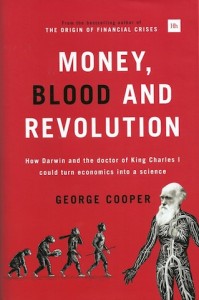The one-sentence summary
Economic growth is generated by a circulatory flow of wealth through society – upward from the private sector and downward by the state.
WHAT THE BOOK SAYS 
· Economics is a broken science, believing in multiple, inconsistent things at the same time. These inconsistencies, and the apparently unresolvable debates between leading economists, along with incoherent government policies, are all symptomatic of a subject in crisis.
· Meanwhile mathematical models are becoming more complex but their predictive ability is not improving.
· Happily, scientist and philosopher Thomas Kuhn worked out what needs to be done to fix a scientific crisis. When it happens, there are 5 stages:
1. Discrepancies show – the prevailing paradigm begins to fail the empirical test.
2. Disagreements start – experts look for small ad-hoc fixes to their theories.
3. Revolution – a new paradigm emerges that resolves many of the problems of the field.
4. Rejection – the backlash starts and the old guard say it is rubbish.
5. Acceptance – younger, more open-minded students adopt the new paradigm and eventually become leaders in explaining it.
· Viewing the economy as a circulatory system (like blood flow) helps to reconcile the role of the state (downward flow) and the private sector (upward). Like the biceps and triceps, you can’t have one without the other. Understanding their interrelationship helps to identify where to inject fiscal stimulus.
WHAT’S GOOD ABOUT IT
· The book analyses developments and paradigm shifts in astronomy (the planets do not go round the earth – Copernicus), anatomy (blood does not evaporate as it reaches the extremities – Harvey), evolutionary theory (species were not created in one fell swoop – Darwin), and continental drift (continents are not fixed -Wegener).
· Inspiration from these areas can inspire a new economic view. Policy implications are:
1. Stop the herd from adding to the problem – reconsider all areas of policy that promote unnecessarily high borrowing levels (such as student debt).
2. Change the course of the monetary river – the flow of money from the banks needs to be rerouted from the top to the bottom of the economy (quantitative easing at the top doesn’t work).
3. Change the course of the fiscal river – lower taxation on labour (income tax) and higher taxation on capital (corporate profits).
· There is a good layperson’s review of the main economic schools: classical, neoclassical, libertarian, monetarist, Keynesian, Austrian, Marxist, institutional and behavioural, which the author helpfully plots on a graph.
WHAT YOU HAVE TO WATCH
· Nothing. It’s clearly written and provides a new perspective we can all understand.
